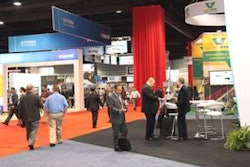Sanderson Farms Inc. saw a significant improvement in its net income for fiscal 2012, largely based off of a decrease in production, according to the company.
The company recorded a yearly income totaling $53.9 million for 2012, compared to a loss of $127.1 million in 2011. Sanderson Farms’ top managers held a conference call on December 18, just after releasing figures for the fourth quarter and fiscal year 2012.
While the company does not look to immediately ramp up production, it is still keeping expansion plans in mind. Plans for a new production facility are in the works, but no formal announcements have yet been made. CEO Joe Sanderson Jr. said one of their biggest stumbling blocks now is the high price of feed.
“Feed grain costs in fiscal year 2012 were only slightly higher than in 2011, but moved significantly higher during our fourth fiscal quarter and remained high today,” said Sanderson. “While grain market prices have come down from their highs in August, market prices on both corn- and soybean-based meal remain well above historical average.” Had Sanderson Farms locked in all its feed needs for fiscal 2013 the night prior to their conference call, the cost of grain would be $116.4 million higher than the cost from 2011.
Consumer confidence and demand for Sanderson Farms’ finished product is also a driving factor. “Because we expect food service demand to remain weak until macroeconomic conditions improve, we will maintain our reduced production levels to better balance our production with customers’ demand as reported on our August call,” said Sanderson. “We currently plan to leave that production in place through 2013.”
The company is currently looking at several driving factors to improve the odds of profitability. Those include the success of South American grain crops which could take pressure off U.S. grain exports, the outcome of the fiscal cliff debate in Washington and its impact on consumer confidence, the planting intentions and success of the 2013 crops in the U.S., and the overall European financial situation.
Meanwhile, the company is thinking forward in terms of expansion plans.
“We hope to be in a position to announce the location of the next plant soon,” said Sanderson. “We are committed to continuing to grow our company to add value for our shareholders and opportunities for our employees. I am ready to do that. No matter the market conditions we will continue to focus on those things we can control, and manage those we can’t the best we can.
“The main thing is we need to have a good crop in the bin … Corn and soybean meal need to be at reasonable levels. We don’t need to be looking down at $7.50 corn and $425 soybean meal. We don’t need to have a huge potential challenge to our balance sheet when we embark on a building campaign.”
There is a possibility the new facility could be in a geographic area than its existing plants.
Mike Cockrell, treasurer and CFO of Sanderson Farms, said effective October 4, Sanderson Farms amended its revolving credit facility to remove the geographic limitations on new facilities. This will now allow the company to build facilities anywhere in the U.S., rather than limit those plants to the states of North Carolina and Georgia.









